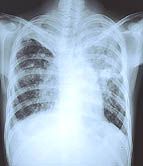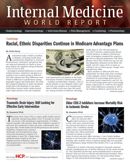Publication
Article
Tuberculosis Risk for Index Patient Contacts
Author(s):
Contacts of index patients with tuberculosis (TB) are at a much higher risk of coprevalent TB than previously thought, especially contacts under 15 years of age.

Lifetime risk of tuberculosis (TB) was higher in contacts with evidence of infection than older estimates, according to results published in American Journal of Respiratory and Critical Care Medicine.
Researchers from the Academic Medical Center in Amsterdam, the Netherlands, conducted a retrospective cohort study using 10 years of public health surveillance data from the TB control department of the public health service (PHS). The researchers examined the results and followed up with patients traced and examined in the course of a contact investigation of pulmonary TB (PTB) through the PHS. Then, the client registration of PTB at the PHS was used in order to determine if a contact developed TB during the follow up period.
The TB diagnosis and tracking process in Amsterdam entailed collecting demographic, clinical, and laboratory information. The risk of transmission is then evaluated using interviews about recent contact with other people. From that information, investigators track the patient’s recent contacts and evaluate the duration and frequency of exposure to the index patient during the infectious period.
Contacts are qualified into rings, such as first, second, third, etc., based on national contact investigation guidelines. If a TB diagnosis was made, the control physician prescribed an anti-TB therapy.
Latent TB infection (LTBI) patients were administered preventive therapy, or if contraindicated, more contacts were contacted for follow-up for the proposed duration of 2 years.
During the study period of 2002-2011, there were 9,332 contacts of 610 index PTB patients. Of the contacts, 63% had a male index patient, 4% had an index patient aged less than 15 years, 76% had a smear-positive TB index patient, and 7% had an HIV positive TB index patient. The contacts were 48% male, 16% aged less than 15 years, 69% were of Dutch nationality, 67% were first- or second-ring contacts, and 32% demonstrated evidence of a bacillus Calmette-Guerin (BCG) vaccination. Just 0.8% (74 out of 9,332 patients) had coprevalent TB, which was not associated with the sex of the index patient.
“The 5 year risk of TB among contacts with evidence of infection was higher compared with older estimates, and the risk of TB differed considerably by age,” the authors concluded. “Furthermore, the 5 year risk of incident TB among contacts with LTBI and without preventive therapy was low at 2.4%, suggesting limited impact of expanding preventive therapy. These results suggest that the risk of TB might vary considerably between populations.”
The authors also acknowledged children are at much higher risk of progression to TB than adults once they are infected. In this examination, the risk of coprevalent and incident TB in contacts with LTBI aged less than 5 years was about 2 times more than among contacts aged 5-14 years. The risk for contacts aged 5-14 years was almost 3 times the risk among contacts older than 15 years.






